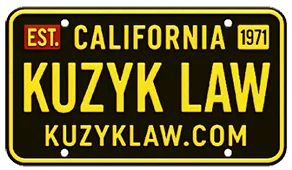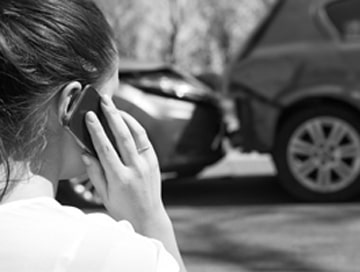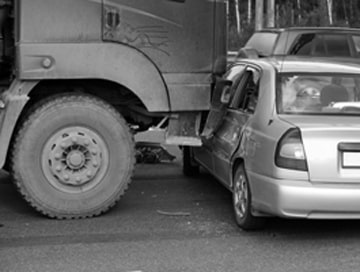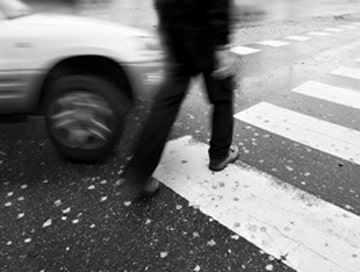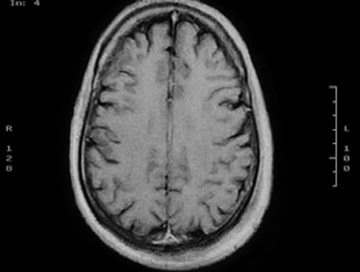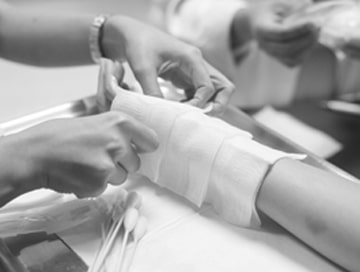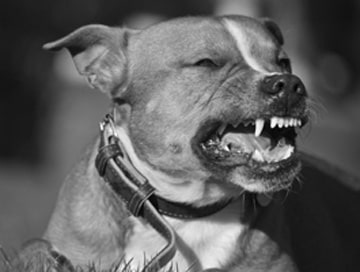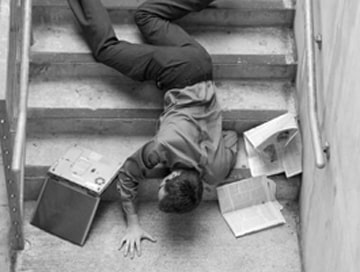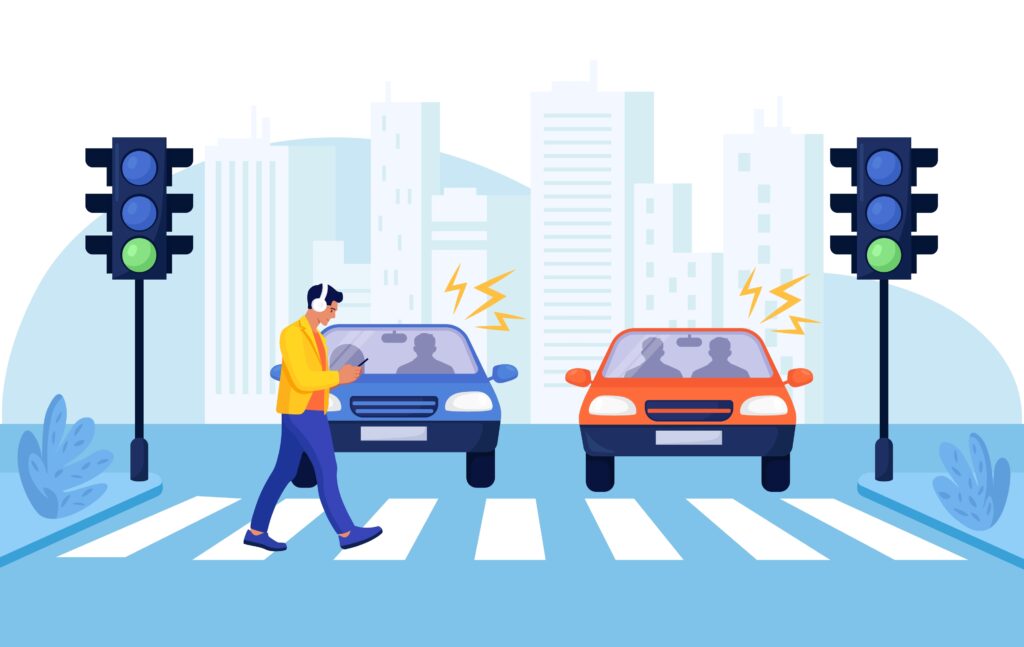
With its vibrant cultural scene and historical landmarks like the Fresno Metropolitan Museum and Forestiere Underground Gardens, Fresno, California, is best explored on foot.
However, pedestrian accidents can cast a shadow over these charming destinations. These incidents can have devastating consequences, often leaving victims with serious injuries or even taking their lives.
Understanding the common causes of pedestrian accidents is crucial for keeping everyone safe, both those strolling through Fig Garden District or enjoying the nightlife near Fulton Street and those navigating Fresno’s busy streets.
The Danger of Divided Attention: Distracted Driving and Pedestrian Safety
Distracted driving is a growing threat on our roads, posing a significant danger to pedestrians, especially in bustling cities like Fresno.
When drivers take their eyes off the road or their minds off the task of driving, their reaction times suffer, and the risk of accidents increases dramatically.
Cell phone use (texting, calling, etc.)
Texting, talking on the phone, or even checking social media notifications are some of the most common distractions.
These actions require visual, cognitive, and manual focus, all of which are diverted away from driving safely.
A driver distracted by their phone may not see a pedestrian entering a crosswalk or stepping off the curb, leading to a potential collision.
Eating or drinking while driving
Juggling a burger and fries or reaching for a coffee can be precarious behind the wheel.
These activities take a driver’s hand off the wheel and their eyes off the road, compromising their ability to react to unexpected situations like a pedestrian crossing the street.
Adjusting the radio or GPS
Fiddling with the radio or programming a GPS can be momentarily distracting. However, in a dynamic traffic environment, even a brief lapse in attention can be enough to miss a pedestrian entering the roadway.
Consequences for Pedestrians
The consequences of distracted driving for pedestrians can be severe. Delayed reaction times due to these distractions can mean the difference between safely stopping for a pedestrian and causing a collision.
Pedestrians, often lacking vehicle protection, are particularly vulnerable to injuries or fatalities in such accidents.
The Need for Speed? The Dangers of Speeding and Pedestrian Safety
The allure of speed can be vital, especially on Fresno’s wide avenues.
However, the desire to get somewhere quickly can have devastating consequences, particularly regarding pedestrian safety.
Risks Associated with Speeding
Reduced Reaction Time:
Speeding creates a shorter window for drivers to react to potential hazards.
The faster a vehicle travels, the greater the distance it covers in the time it takes the driver to perceive danger, process information, and take action.
This reduced reaction time can be the difference between safely stopping for a pedestrian and causing a collision.
Increased Severity of Injuries:
Physics dictates that the force of a collision increases dramatically with speed. A pedestrian struck by a vehicle at high speed is far more likely to suffer severe injuries or even death compared to an accident at a slower speed.
These injuries can have a lifelong impact on the victim, leaving them with permanent disabilities and substantial medical bills.
Statistics
Data from the National Highway Traffic Safety Administration (NHTSA) paints a grim picture. In 2021, speeding was a factor in nearly 29% of all fatal crashes, and a significant portion of these involved pedestrians.
These statistics highlight the clear connection between speeding and pedestrian fatalities.
Right of Way Roulette: Understanding Yield Laws and Keeping Pedestrians Safe
Knowing who has the right of way is a fundamental principle of safe driving. Unfortunately, failing to yield the right of way is a frequent cause of pedestrian accidents in Fresno, California.
This section will explore common scenarios where pedestrians have the right of way and the legal implications of failing to yield.
Common Scenarios Where Pedestrians Have the Right of Way:
Crosswalks: Marked and unmarked are designated areas for pedestrians to cross the street safely. California Vehicle Code (CVC) Section 21950 states that vehicles must stop and yield the right of way to pedestrians within a marked crosswalk or unmarked crosswalk at an intersection when a pedestrian is already crossing the roadway within the crosswalk.
Turns at Intersections: Turning vehicles must also yield the right of way to pedestrians who are lawfully using a crosswalk or already in the intersection when the turn signal is activated.
This includes left turns where a pedestrian is crossing in the opposite direction or right turns, where a pedestrian is crossing in front of the turning vehicle.
Legal Implications of Failing to Yield:
California law takes pedestrian safety seriously.
Failing to yield the right of way to a pedestrian in a crosswalk violates CVC Section 21950.
It can result in a traffic citation and points on the driver’s license. In cases where a pedestrian is injured or killed due to a driver’s failure to yield, the driver can face more severe consequences, including criminal charges and civil liability lawsuits.
A Dangerous Mix: Drunk Driving and Pedestrian Safety
Sharing the road requires responsibility from everyone, especially when it comes to protecting the most vulnerable – pedestrians.
Drunk driving poses a significant threat to pedestrian safety in Fresno, California. Alcohol impairs a driver’s abilities in critical ways, increasing the risk of accidents with devastating consequences.
How Drunk Driving Affects Drivers:
Reduced Motor Skills:
Alcohol consumption significantly diminishes a driver’s ability to control the vehicle. Reaction times slow, coordination weakens, and overall motor skills become impaired. These impairments make it difficult to maneuver the car safely, increasing the likelihood of collisions with pedestrians.
Impaired Judgment and Reaction Times:
Alcohol disrupts the brain’s ability to process information and make sound judgments. Drunk drivers often misjudge distances, underestimate speeds, and fail to react quickly to unexpected situations like a pedestrian crossing the street.
The Numbers Don’t Lie:
According to the Centers for Disease Control and Prevention (CDC), in 2020, one in five pedestrian fatalities involved an alcohol-impaired driver. These statistics highlight the deadly link between drunk driving and pedestrian accidents.
Sadly, the consequences for pedestrians are often severe, with many victims suffering life-altering injuries or even death.
The Challenge of Poor Visibility
Contributing Factors
Even in situations without drunk driving, poor visibility can contribute to pedestrian accidents. Fresno drivers face additional challenges during:
Nighttime Driving: Reduced visibility at night makes it harder for drivers to spot pedestrians, especially those wearing dark clothing. Headlights play a crucial role, but more than they may be needed to illuminate pedestrians in poorly lit areas.
Poor Weather Conditions: Rain, fog, and other adverse weather conditions further compromise visibility. Pedestrians may be obscured by the elements, making it difficult for drivers to see them in time to avoid a collision.
Jaywalking: Understanding the Risks
Jaywalking refers to crossing the street outside designated crosswalks or against traffic signals. This unpredictable behavior can create dangerous situations for both pedestrians and drivers.
Crossing Illegally or Unpredictably: Jaywalking disrupts the expected flow of traffic.
Drivers may not anticipate a pedestrian crossing outside a crosswalk, leading to sudden swerving or braking maneuvers that can cause accidents.
Higher Risk Areas: Certain areas, like highways or busy intersections, are particularly dangerous for jaywalking.
The increased speed and volume of traffic significantly elevate the risk of accidents for pedestrians who choose to cross outside designated areas.
Navigating the Left Turn: A Challenge for Drivers
Left turns can be particularly hazardous for pedestrians, presenting several challenges for drivers:
Challenges for Drivers
Visibility Issues: A driver’s blind spot can obscure a pedestrian crossing in the opposite direction, especially when turning left from a busy intersection. Additionally, pedestrians wearing dark clothing or blending into the background may need help to see.
Misjudging Speed and Distance: Drivers may misjudge the speed or distance of an oncoming pedestrian, leading to a collision.
Vehicle Backing Up
Common Locations
Parking lots
The hustle and bustle of parking lots can create a chaotic environment. Pedestrians maneuvering between parked cars may not be noticed by drivers backing out of parking spaces.
Driveways
Even familiar driveways can pose a risk. Children playing near driveways or pedestrians walking behind a car getting ready to leave are vulnerable to accidents if the driver fails to check their blind spots.
Urban Planning and Pedestrian Infrastructure
Design Flaws
Many urban and suburban areas lack proper sidewalks, forcing pedestrians to walk in parking lots and driveways, increasing the risk of encounters with reversing vehicles.
Poorly designed crosswalks, with inadequate visibility or signage, can also create confusion and lead to accidents.
How to Prevent Pedestrian Accidents
Drivers, Take the Wheel, Not Your Phone:
Stay Alert: Distracted driving is a significant threat to pedestrians. Put down the phone, avoid eating or adjusting the radio while driving, and keep your eyes focused on the road. A momentary lapse in attention can have devastating consequences.
Respect the Speed Limit: Speeding reduces reaction time and increases the severity of accidents. Obey posted speed limits, especially in areas with heavy pedestrian traffic.
Yield and Look Out: Always yield the right of way to pedestrians at crosswalks and intersections. Be extra cautious in areas known for high pedestrian activity, such as near schools or parks. Perform a thorough check for pedestrians before making turns or entering crosswalks.
Pedestrians, Walk Smart:
Crosswalks are Your Friend: Always use designated crosswalks and follow pedestrian signals. Make eye contact with drivers to ensure they see you before crossing.
Be Seen, Be Safe: Wear reflective clothing or a flashlight to improve your visibility during nighttime or low-visibility conditions.
Distracted Walking is Dangerous Walking: Avoid using electronic devices like phones while walking, especially near traffic. Stay alert and aware of your surroundings.
Legal Assistance for Pedestrian Accident Victims
Kuzyk Personal Injury & Car Accidents Lawyers understands the unique challenges faced by pedestrian accident victims in Fresno. Our team has a proven track record of successfully handling these cases, with a deep understanding of California personal injury law.
Why Choose Kuzyk Personal Injury & Car Accidents Lawyers
Kuzyk Personal Injury & Car Accidents Lawyers understands the unique challenges faced by pedestrian accident victims in Fresno.
Our team has a proven track record of successfully handling these cases, with a deep understanding of California personal injury law.
Client Testimonials:
“Kuzyk Personal Injury & Car Accidents Lawyers was there for me every step of the way. They were professional, compassionate, and always available to answer my questions. Thanks to their hard work, I got the medical treatment I needed and got back on my feet.” – David L., Fresno resident.
Don’t face the aftermath of a pedestrian accident alone. Contact Kuzyk Personal Injury & Car Accidents Lawyers today for a free consultation. We will fight for the justice and compensation you deserve.
Don’t Walk Alone: Protecting Yourself and Your Rights After a Pedestrian Accident
Fresno’s vibrant streets can be dangerous for pedestrians. Distracted drivers, jaywalking, and blind spots can all lead to accidents.
Preventative Steps:
- Drivers: Stay alert, obey traffic signals, and watch for pedestrians.
- Pedestrians: Use crosswalks, stay visible, and avoid distractions.
After an Accident:
Don’t walk alone. Kuzyk Personal Injury & Car Accidents Lawyers’s experienced pedestrian accident attorneys fight for your rights and the compensation you deserve. Contact them today for a free consultation.
